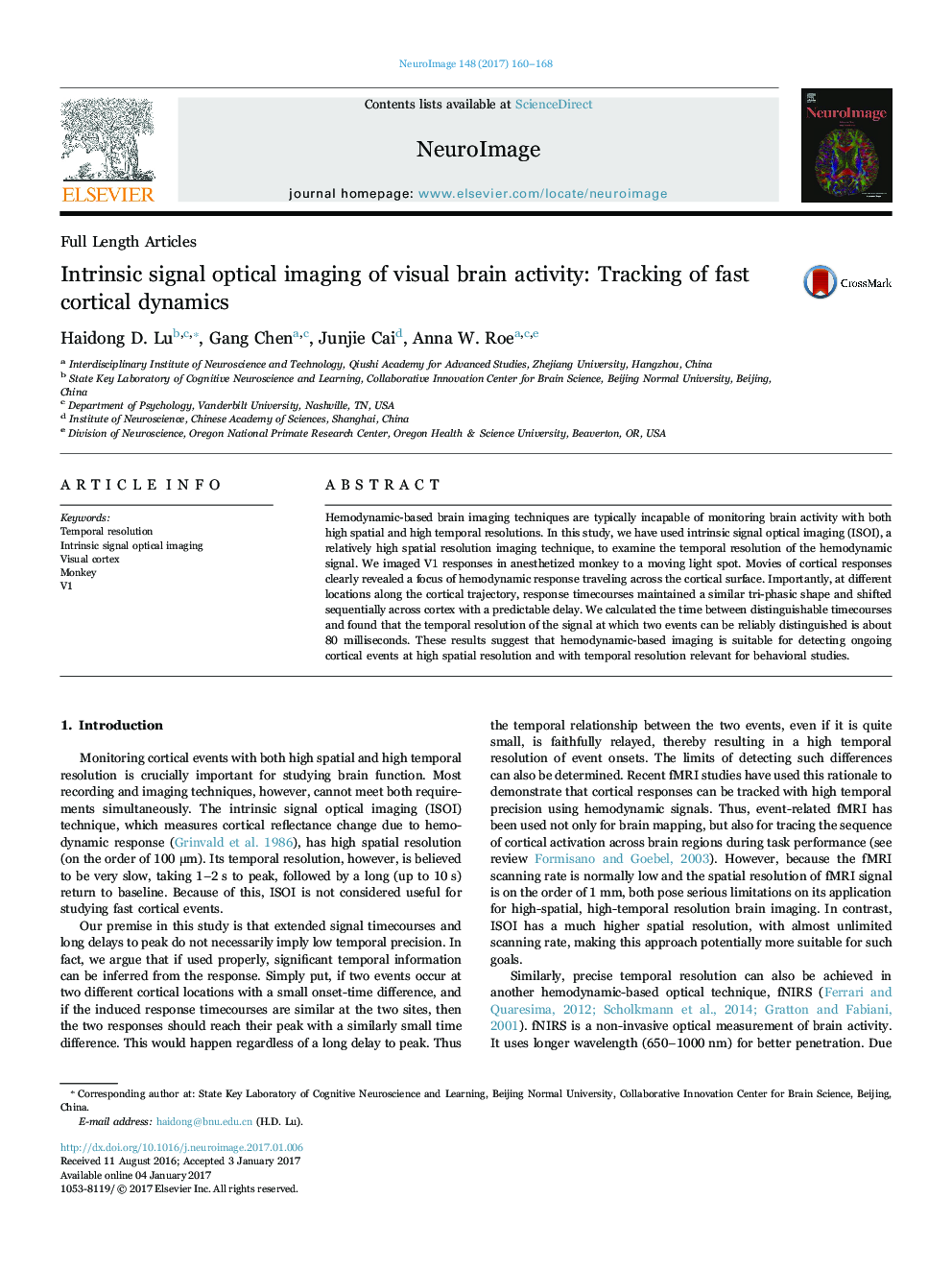| Article ID | Journal | Published Year | Pages | File Type |
|---|---|---|---|---|
| 5631286 | NeuroImage | 2017 | 9 Pages |
â¢Intrinsic signal optical imaging (ISOI) movies demonstrate tracking of fast cortical events.â¢Temporal resolution of reliably distinguishing two events with ISOI is about 80 ms.â¢ISOI signal at each location of moving spot trajectory has a tri-phasic timecourse.â¢Unlike the global signal, the domain-specific signal is negative in all 3 phases.
Hemodynamic-based brain imaging techniques are typically incapable of monitoring brain activity with both high spatial and high temporal resolutions. In this study, we have used intrinsic signal optical imaging (ISOI), a relatively high spatial resolution imaging technique, to examine the temporal resolution of the hemodynamic signal. We imaged V1 responses in anesthetized monkey to a moving light spot. Movies of cortical responses clearly revealed a focus of hemodynamic response traveling across the cortical surface. Importantly, at different locations along the cortical trajectory, response timecourses maintained a similar tri-phasic shape and shifted sequentially across cortex with a predictable delay. We calculated the time between distinguishable timecourses and found that the temporal resolution of the signal at which two events can be reliably distinguished is about 80 milliseconds. These results suggest that hemodynamic-based imaging is suitable for detecting ongoing cortical events at high spatial resolution and with temporal resolution relevant for behavioral studies.
